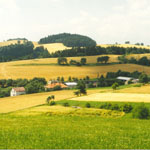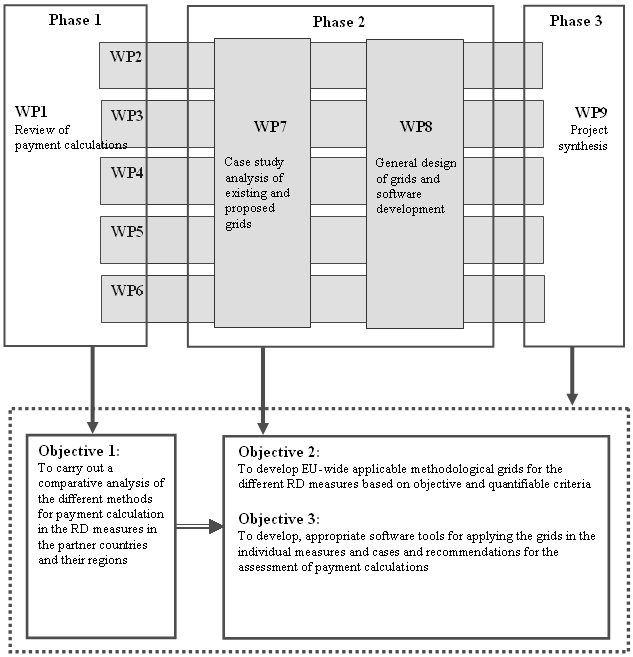Project Description
Background

Rural development measures recognize the multifunctional role of farmers and other land managers and provide a range of different payments to compensate for additional costs and income forgone, as a consequence of natural and other handicaps, from compulsory management restrictions or from voluntary commitments to apply certain production methods which go beyond good farming or animal husbandry practice. The level of payment is generally based on estimates of the additional costs or income foregone. In addition, in some cases agri-environment and animal welfare payments could included an 'incentive' element of up to 20% of the calculated income foregone/cost incurred. However, this incentive element has now been replaced in the new Rural Development Regulation 2007-2013 (EC Reg 1698/2005) through the introduction of the concept of transaction costs in the calculation of the payments for agri-environment and animal welfare measures.

The calculation of levels of payment is generally based on 'typical' or average figures for costs and income. It is well recognized that these will vary with production system, and regional or local conditions. However the degree to which these variations are taken into account varies, with the consequence that there may be over-or under-compensation in individual circumstances. Member States may have different methods of calculating the level of payments. It is also known that the rate of uptake of voluntary agri-environmental schemes may vary regionally or with production system because of variation in the costs of compliance that are not taken into account when setting rates of payment. In order to take into account variations in additional cost and income foregone between the different production systems and different natural conditions for the various practices and prescriptions, it is necessary to develop a methodological framework to calculate payments which considers such differences but at the same time can be applied EU-wide. Only a consistent methodological framework can ensure that payments reflect real additional cost and income foregone avoiding over- and under-compensation of farmers. In that way, the development of methodological grids for payment calculations of rural development measures addresses the EU objective of promoting a living countryside by ensuring adequate payment levels for farmers and, at the same time, the provision of public goods through taxpayers money.
Summary and Objectives

The project will develop methodological grids for the calculation of payments in rural development measures in the EU and its member states. The project covers a representative set of EU member states, including United Kingdom (UK), Germany, Finland, Lithuania, Czech Republic, Italy and Greece and regional case studies in the selected countries. Further member states are covered by the project through allocating the task of data collection and analysis to sub-contractors. The selected countries cover a range of different natural and agronomic conditions from intensive farming with good soils and favourable climatic conditions, e.g. in some parts of Germany and England, to extensive livestock systems in some of the most marginal and remote areas in the EU with unfavourable natural conditions isolated from markets, e.g some areas in Scotland, Finland and Greece. The agricultural sectors in the new member states are going through a process of significant structural change and adjustments to new standards. Lithuania and the Czech Republic provide interesting country case studies for the new member states with different farm structures. The priorities in the Rural Development Plans vary between the different partner countries covering all relevant rural development measures. Principally following the new Rural Development Regulation (EC regulation 1698/2005), the project will develop methodological grids for agri-environment measures, compensatory allowances, Natura 2000 payments, forestry measures and animal welfare and meeting standard measures.

Developing methodological grids for the payment calculation in different RD measures requires a detailed knowledge of present conditions and methods at both production level and policy level. At the production level, it is necessary to gather data on the structure and characteristics of the farming sector including natural and agronomic conditions and productions systems and techniques. At the policy level, it is necessary to analyse national and/or regional RD measures, identify the specificities of the measures and link them to cost elements and existing methods for payment calculations in RD measures and their impacts on that structure. This will provide the basis for identifying new methods for payment calculations and, consequently, the development of grids. A central issue in the development of the grids is the evaluation of data requirements and availability. There are several data bases available at national or regional bases like the Integrated Administration and Control System data, as well as other spatially defined data sets that could be used with the appropriate administrative arrangements. Moreover, the new grids are tested through regional case studies and the continuous involvement of policy makers and government agencies ensures the suitability of the grids for the end-users in the project. Policy makers and government agencies in the EU and its member states will be able to use the developed grids to calculate payments in the different RD measures providing a new harmonised, but at the same time flexible, method.
The project has three main objectives:
- To carry out an initial brief comparative analysis (representative cross study) of the methods applied by the member states and their regions for calculating the various aids for their current rural development programmes, grouped by measure.
- To elaborate and recommend methodological grids that are based on objective and quantifiable criteria. They should be applicable EU-wide and differentiated by the nature of the measure.
- To elaborate, based on the methodological grid, appropriate software tools for applying this grid in the individual measures and cases and recommendations for the assessment of payment calculations.
Structure
Figure 1 shows the linkages between project phases, workpackages and the objectives of the project.

- WP2 - Elaboration of a methodological framework for the payment calculation in agri-environment measures
- WP3 - Elaboration of a methodological framework for the payment calculation in compensatory allowances
- WP4 - Elaboration of a methodological framework for the payment calculation in Natura 2000 payments
- WP5 - Elaboration of a methodological framework for the payment calculation in forestry schemes
- WP6 - Elaboration of a methodological framework for the payment calculation in animal welfare and meeting standard measures











